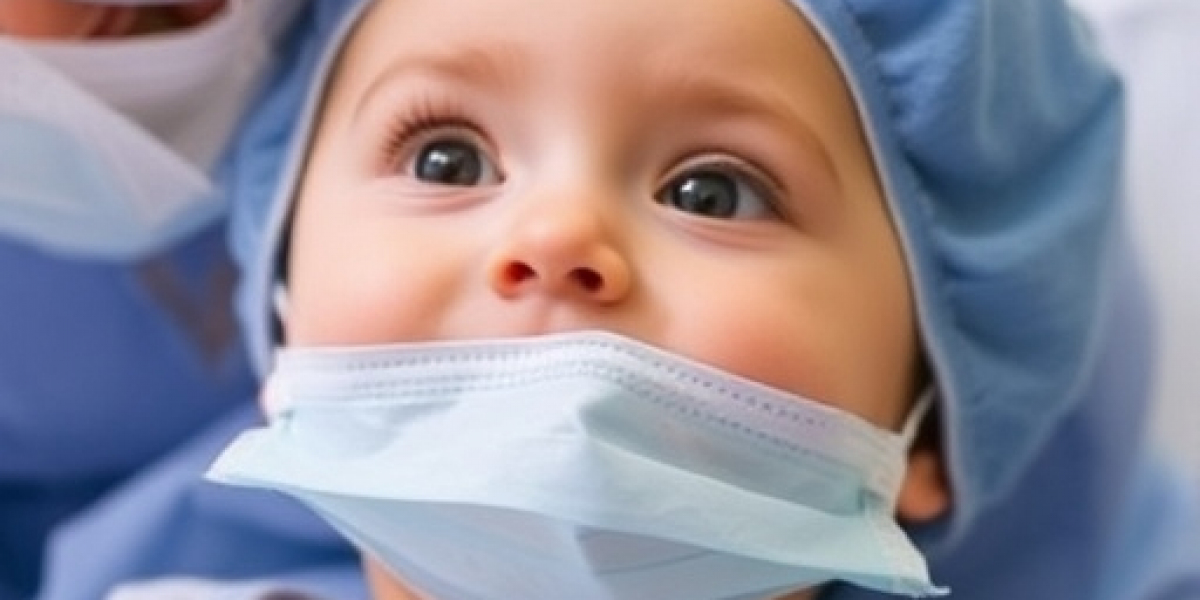Understanding Cleft and Craniofacial Conditions
A cleft lip or palate occurs when tissues in the baby's face and mouth don’t fuse properly during early pregnancy. These conditions can range from minor notches in the lip to large openings in the lip, palate, or both. Craniofacial anomalies, meanwhile, involve defects in the structure of the skull and face, impacting a broader area of the head.
The root causes of these conditions can be genetic, environmental, or a combination of both. Smoking, alcohol consumption, and poor nutrition during pregnancy are known risk factors. With early diagnosis and intervention, these conditions can be managed successfully.
Stages of Treatment for Cleft and Craniofacial Surgery
- Diagnosis and Early Intervention
The treatment journey begins with the diagnosis, usually made during a routine ultrasound around the 20th week of pregnancy. Once a cleft or craniofacial abnormality is detected, a multidisciplinary team consisting of plastic surgeons, pediatricians, orthodontists, speech therapists, and ENT specialists is assembled. The team will assess the severity of the condition and design a treatment plan, which often begins shortly after birth.
- Pre-Surgical Therapy and Feeding Assistance
Babies with cleft lip or palate often face difficulties in feeding, which can lead to poor nutrition and delayed growth. Specialized feeding techniques, such as using bottles with adapted nipples or feeding obturators, can assist in making sure the baby gets adequate nourishment. Pre-surgical orthopedic devices like NAM (Nasoalveolar Molding) may also be used to help align the tissues and bones, reducing the complexity of the upcoming surgery.
- Cleft Lip Surgery
The first surgery usually involves repairing the cleft lip and is typically performed when the baby is between 3 to 6 months old. This procedure involves reconnecting the tissues and muscles of the lip and reshaping the nose. The goal is to close the gap and restore normal facial appearance while ensuring the lip functions properly.
- Cleft Palate Surgery
The cleft palate surgery is typically performed when the child is between 9 to 18 months old. This procedure is more complex than the lip surgery, as it involves closing the opening in the roof of the mouth and restoring the muscles to improve speech and eating abilities. During the surgery, the surgeon may reposition the soft and hard palate to allow for proper functionality.
- Craniofacial Surgeries
For more extensive craniofacial anomalies, such as craniosynostosis (where the bones of the skull fuse prematurely), corrective surgery may be required to reshape the skull. Craniofacial surgeries are often performed in multiple stages, starting as early as infancy and continuing into adolescence. These surgeries involve careful planning to balance both cosmetic and functional needs, such as brain growth, facial symmetry, and breathing improvements.
- Secondary Surgeries and Revisions
As children grow, they may require secondary surgeries to address functional or cosmetic issues. For example, some children may need additional surgery to correct nasal deformities, improve speech, or refine the appearance of the lip and palate. Scar revisions or bone grafting procedures may also be necessary to support tooth development or fill gaps in the gums.
The Recovery Process
- Initial Post-Surgery Care
After cleft lip or palate surgery, the child is closely monitored for infection, swelling, and breathing difficulties. The use of arm restraints (often called “no-no” splints) may be recommended to prevent the child from touching the surgical area. Pain management and a liquid or soft food diet are critical components of early recovery.
For craniofacial surgeries, recovery tends to be more intensive. It may involve a longer hospital stay, and children often require breathing support or pain management tools for a few days. Parents are taught how to care for surgical wounds, administer medication, and ensure proper nutrition during this recovery phase.
- Speech Therapy and Feeding Support
Children with cleft palates often have difficulties with speech, which can persist even after surgery. Speech therapy becomes a critical part of the recovery process, helping the child develop clear and correct speech patterns. A speech therapist may work with the child regularly to improve communication skills and help reduce any speech-related difficulties.
Feeding support may also be necessary, especially in the early months following palate surgery. A nutritionist or feeding therapist may help parents transition from a liquid to a soft food diet and ensure the child receives adequate nutrition for healthy growth.
- Orthodontic and Dental Care
As the child grows, orthodontic treatment may be needed to correct any dental issues caused by the cleft or craniofacial condition. This can involve braces to align the teeth or palate expanders to widen the upper jaw. Children may also need dental implants or bone grafts to fill in missing teeth or gaps in the gumline.
- Emotional and Psychological Support
Beyond the physical recovery, children with cleft and craniofacial conditions often face emotional and psychological challenges. They may experience self-esteem issues due to visible scars or facial differences. Counseling and support groups can be valuable tools for helping children and families cope with the emotional aspects of the condition. Peer groups, where children meet others with similar experiences, can provide a sense of community and reduce feelings of isolation.
Long-Term Outlook
The success of cleft and craniofacial surgery has vastly improved over the past few decades, with the majority of children growing up to lead healthy, fulfilling lives. However, the road to recovery is long and requires ongoing medical, dental, and emotional care.
Many children will continue to see their medical team into adolescence, particularly for dental, speech, and aesthetic refinements. With a comprehensive approach to care, including regular follow-ups and necessary interventions, individuals born with cleft or craniofacial conditions can expect to overcome the challenges associated with these conditions.
Conclusion
The journey of cleft and craniofacial surgery is one of hope, strength, and resilience. Through early diagnosis, comprehensive treatment plans, and dedicated recovery efforts, individuals can regain functionality and improve their quality of life. By understanding the stages of treatment and recovery, families can better prepare for the journey ahead and celebrate the remarkable progress that modern medicine has made in this field.
Explore Vadodara's top hospitals for exceptional healthcare services, featuring state-of-the-art facilities and expert medical teams for all your health needs.
Winter Skin Care Guide: How Dermatology Specialists Treat Seasonal Skin Issues








